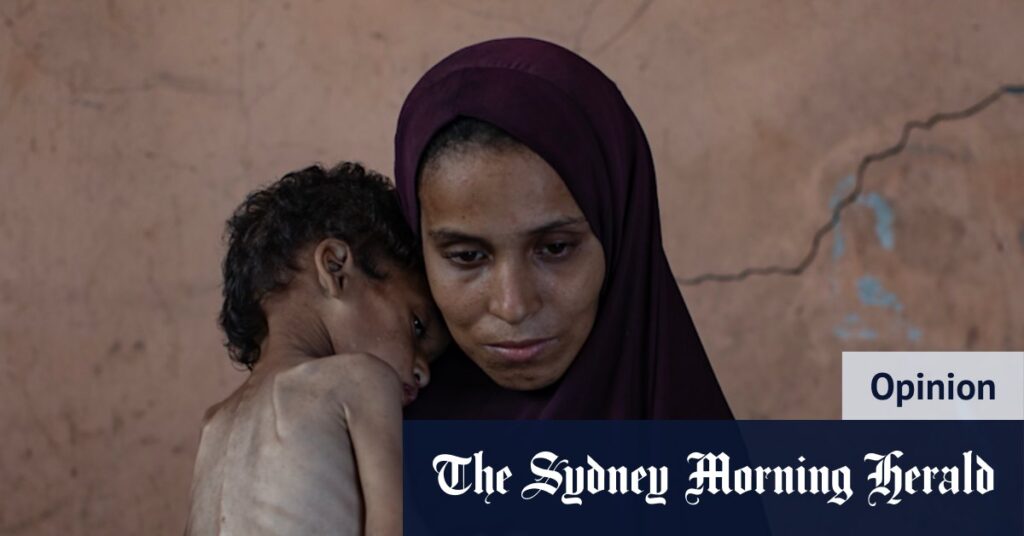
When you hold a starving baby in your hands, you feel how fragile life is. This stark reality is a daily occurrence in Gaza, where children are seen in medical facilities or on the streets with their mothers, begging for food. The toddlers resemble infants, and older children appear the size of toddlers. If they have enough energy to move, they’re not playing; they are too traumatized by the ongoing conflict, searching for water or scraps of food. The mothers, driven by the instinct to survive, are distraught by their children’s condition.
The image of two-year-old Palestinian child Yazan Abu Foul, suffering from severe malnutrition and held by his mother Naima, encapsulates the dire situation. Despite the availability of hundreds of trucks at the border loaded with food, infant formula, and medical supplies, these resources remain inaccessible. This humanitarian crisis forces us to question the state of humanity and ponder what has gone wrong in a world where defenseless people continue to suffer.
The Humanitarian Blockade
The blockade on Gaza, in place since 2007, has severely restricted the flow of goods and people. While intended as a security measure, it has led to widespread shortages of essential goods, exacerbating the humanitarian crisis. According to the United Nations, more than half of Gaza’s population lives below the poverty line, with food insecurity affecting approximately 68% of households.
The situation is further complicated by the political impasse between the governing bodies in Gaza and Israel. Despite international calls for humanitarian aid to be allowed through, the blockade remains largely intact, leaving many to suffer needlessly.
Long-term Health Implications
Malnutrition in children leads to severe long-term health issues, including stunting and wasting. These conditions prevent children from reaching their full potential, impacting physical and mental development. The World Health Organization warns that children deprived of essential nutrients may face lifelong challenges, affecting not only individual lives but the future of the entire population.
“The children will not reach their potential in life if they’re severely malnourished as infants. They won’t develop properly, physically and physiologically, and it can affect mental development,” experts say.
International Response and Challenges
International organizations and NGOs have repeatedly called for an end to the blockade and for humanitarian aid to be allowed into Gaza. However, political complexities and security concerns continue to hinder progress. The international community remains divided, with some countries advocating for increased pressure on Israel, while others emphasize the need for security measures.
Meanwhile, humanitarian organizations on the ground are struggling to provide relief with limited resources. The ongoing conflict and political stalemates only serve to prolong the suffering of Gaza’s population.
The Path Forward
The plight of Gaza’s children is a stark reminder of the urgent need for a political solution that prioritizes human rights and humanitarian needs. As the international community debates the best course of action, the people of Gaza continue to endure unimaginable hardships.
Efforts must be intensified to find a sustainable resolution that addresses both security concerns and humanitarian needs. Until then, the world watches as a humanitarian crisis unfolds, challenging the very essence of our shared humanity.
As the situation in Gaza persists, the question remains: How long will the world stand by as innocent children suffer? The answer lies in the collective will of the international community to act decisively and compassionately.







